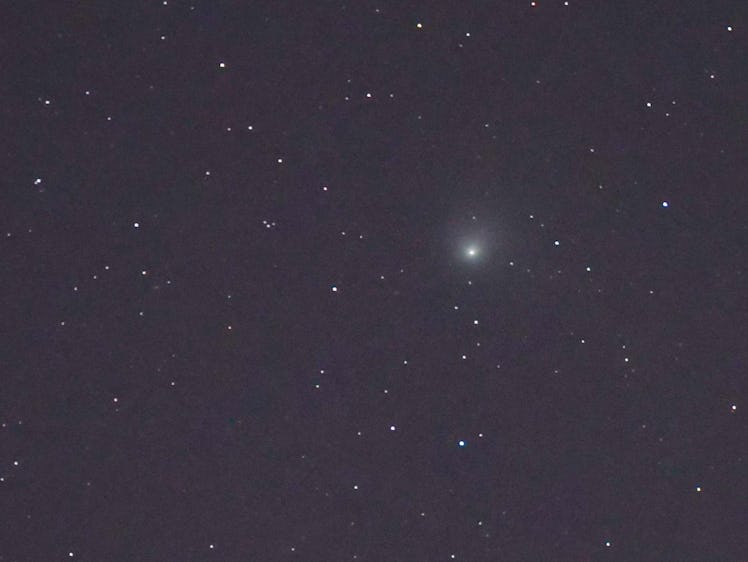Look! You Won’t Be Able To See This Newly Discovered Comet Again For 80,000 Years
A newly discovered comet, called C/2023 A3 (Tsuchinshan-ATLAS), is going to zoom by Earth in 2024, and it's predicted to be really bright.

It’s time to plan ahead and mark your calendars for late September or early October 2024 — if you’re a fan of catching ultra-ultra-rare, once in many lifetimes, sky shows. It’s predicted that around this time, another super rare comet may be zipping past Earth, and it will give a gorgeous, brilliantly bright show that should be naked to the human eye. Here’s what you need to know if you want to catch this with the kids.
According to Science Alert, a newly discovered comet called C/2023 A3 (Tsuchinshan-ATLAS) has caught the attention of astronomers and avid skywatchers. The comet is super old, and far away for now, but “as it gets closer to the Sun and our planet, it could shine brighter in Earth's night sky than many stars,” Science Alert notes. This comet reportedly orbits Earth once every 80,600 years — so it’s really a special treat you don’t want to miss.
What is C/2023 A3 (Tsuchinshan-ATLAS)?
On January 9, 2023, a telescope at the Purple Mountain Observatory located in Zhong Mountain, China, detected a new comet, but it was lost in the sky shortly after when awaiting a follow-up confirmation of the comet, according to the StarWalk app. Then on Feb. 22, 2023, ATLAS, the telescope in South Africa, independently captured the same comet.
“Based on the comet naming system, the comet received the names of both observatories and was officially named C/2023 A3 (Tsuchinshan-ATLAS),” the outlet explained. Now that scientists had a mark on the comet, going back into the observation archives, astronomers were able to see the same comet in the archives of the Minor Planet Center.
From all those observations, astronomers were able to determine “it’s a long-period comet with an orbital period of 26,000 years. It also seems to have a fairly large nucleus.”
When might C/2023 A3 (Tsuchinshan-ATLAS) whizz by Earth?
“The comet's nearest approach to the Sun, or perihelion, won't be until September 28, 2024,” Science Alert notes. Then, after passing by the Sun, C/2023 A3 (Tsuchinshan-ATLAS) it will mark its closest point to Earth on Oct. 13, 2024.
The comet is predicted to be super bright when it swings by Earth next year, measuring brightness in magnitude, where the lower the number, the brighter the star. Minor Planet Center predicts C/2023 A3 (Tsuchinshan-ATLAS) will reach a magnitude of 0.3 between Oct. 5-7, and for comparison sake, the recent green comet c/2022 E3 (ZTF) reached a maximum magnitude of 5.4.
However, scientists stress that while it’s looking like the comet will zip by Earth and be as bright as predicted, there’s a lot of time before it heads our way, and it could fizzle out by then.
For more details, check out Science Alert or track the comet on SkyLive.com.
This article was originally published on